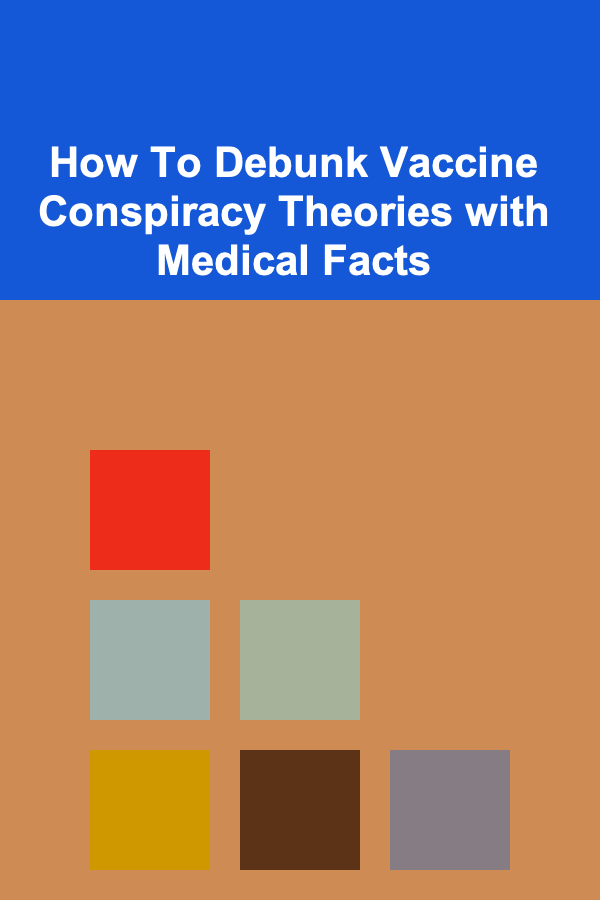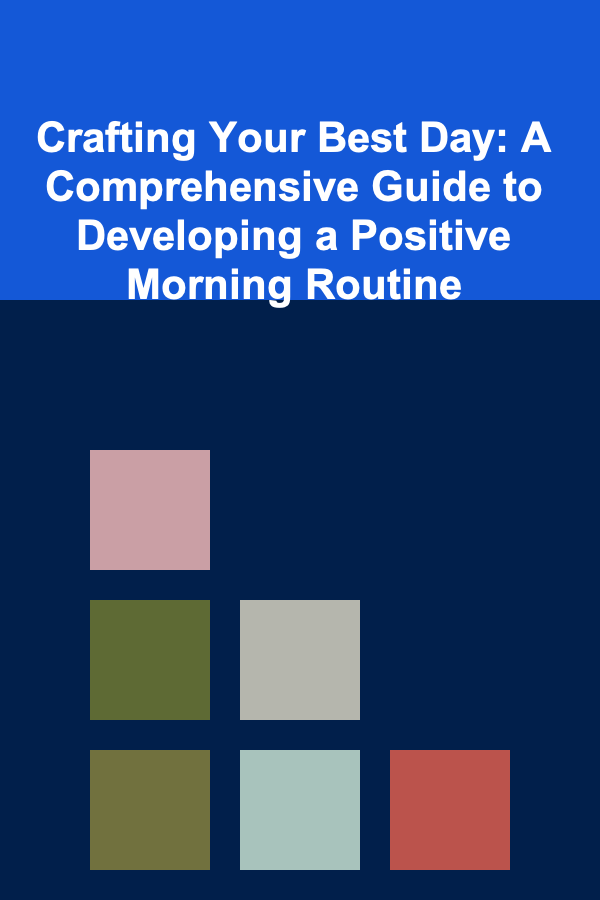
How To Debunk Vaccine Conspiracy Theories with Medical Facts
ebook include PDF & Audio bundle (Micro Guide)
$12.99$5.99
Limited Time Offer! Order within the next:

In the modern era, vaccination has been one of the most effective public health measures to prevent the spread of infectious diseases. However, despite the overwhelming scientific evidence supporting their safety and efficacy, vaccine conspiracy theories continue to thrive on social media and other platforms. These conspiracy theories can lead to a reduction in vaccine uptake, putting entire communities at risk for preventable diseases. This article will provide a deep dive into how to debunk these conspiracy theories using clear medical facts and evidence-based reasoning.
Understanding Vaccine Conspiracy Theories
Vaccine conspiracy theories have existed for decades, but they have gained significant traction in recent years due to the rise of social media, online forums, and easily accessible misinformation. These theories often claim that vaccines are unsafe, unnecessary, or part of a larger conspiracy aimed at controlling or harming the population. Some of the most common vaccine conspiracy theories include:
- The "Vaccines Cause Autism" Myth: Popularized by a fraudulent 1998 study led by Andrew Wakefield, which has since been debunked and retracted.
- Government Control or Population Control: Claims that vaccines are a means for governments or powerful organizations to control the population or reduce the number of people in the world.
- "Big Pharma" and Profit Motives: The assertion that pharmaceutical companies create and promote vaccines primarily for financial gain, regardless of safety concerns.
- False Claims About Vaccine Ingredients: Accusations that vaccines contain harmful chemicals or toxins, such as mercury, formaldehyde, or aluminum, which are either used in trace amounts or have been shown to be safe.
While these theories are widespread, they are typically based on misinformation, misunderstanding of science, or deliberate distortion of facts. It is crucial to address these concerns head-on with medical facts to help people make informed decisions.
The Science Behind Vaccines
Before addressing conspiracy theories, it's essential to understand the fundamental science behind vaccines. Vaccines are biological preparations designed to provide immunity against specific diseases. They work by mimicking the presence of a pathogen (such as a virus or bacteria) without causing the disease itself. This process triggers the body's immune system to respond as if it were being attacked by the actual pathogen, building up an immune memory that can protect the person in case they encounter the real pathogen in the future.
How Vaccines Are Developed
The development of vaccines is a rigorous process that involves several stages of testing for safety and efficacy. This process typically includes:
- Preclinical Trials: Before being tested in humans, vaccines are first tested in laboratories using cell cultures and animal models to assess safety.
- Clinical Trials : These are conducted in three phases:
- Phase 1: A small group of healthy volunteers receives the vaccine to evaluate its safety and the immune response it generates.
- Phase 2: The vaccine is tested in a larger group of people, often with different age groups or those at higher risk for the disease, to assess its effectiveness and safety.
- Phase 3: The vaccine is tested in thousands of people to determine its overall safety and ability to prevent the disease in a large, diverse population.
- Post-Approval Monitoring: After a vaccine is approved, it continues to be monitored for adverse effects through systems like the Vaccine Adverse Event Reporting System (VAERS) in the United States.
Vaccine Safety
One of the most important points to emphasize when debunking vaccine conspiracy theories is that vaccines are among the most thoroughly tested medical products in the world. They undergo extensive clinical trials, and their safety is continually monitored after approval.
- Safety Monitoring Systems: In addition to pre-approval trials, vaccines are subject to ongoing surveillance once they are in widespread use. If any adverse reactions are observed, they are thoroughly investigated, and changes can be made to the vaccine recommendations or usage if necessary.
- Vaccine Ingredients: Many conspiracy theories focus on specific ingredients used in vaccines. For example, claims that vaccines contain harmful levels of mercury (in the form of thimerosal) have been thoroughly debunked. Thimerosal was removed from most vaccines in the early 2000s as a precautionary measure, even though scientific studies have shown it to be safe in the amounts used in vaccines. Similarly, the levels of aluminum or formaldehyde used in vaccines are incredibly small and do not pose a risk to human health.
Debunking Common Vaccine Conspiracy Theories
Now that we have a basic understanding of how vaccines work and their safety profiles, let's explore how to address some of the most common conspiracy theories.
1. The "Vaccines Cause Autism" Myth
One of the most persistent vaccine conspiracy theories is the claim that vaccines, particularly the MMR (measles, mumps, and rubella) vaccine, cause autism. This myth began with a 1998 study by Andrew Wakefield, which suggested a link between the MMR vaccine and autism. However, this study was later discredited, retracted, and Wakefield lost his medical license.
The Facts:
- Multiple Large-Scale Studies : Extensive research has been conducted to investigate the potential link between vaccines and autism. A 2019 study published in Annals of Internal Medicine reviewed the medical records of over 650,000 children and found no increased risk of autism associated with the MMR vaccine.
- No Biological Mechanism: There is no known biological mechanism through which vaccines could cause autism. Autism is a neurodevelopmental disorder with a strong genetic basis. Current scientific evidence suggests that environmental factors may play a role, but vaccines are not among those factors.
- Reputable Organizations: Leading health organizations, such as the Centers for Disease Control and Prevention (CDC), the World Health Organization (WHO), and the American Academy of Pediatrics, all support the conclusion that vaccines are safe and do not cause autism.
2. Government Control or Population Control
Some conspiracy theorists claim that vaccines are part of a government or elite agenda to control the population or reduce the global population. These claims are often associated with misinformation about global health initiatives and population growth.
The Facts:
- Public Health Initiatives: Vaccines are a public health tool aimed at preventing the spread of infectious diseases, not controlling the population. Immunization has been shown to save millions of lives each year by preventing diseases such as polio, measles, and influenza.
- Population Growth: Vaccines contribute to population health by preventing diseases that historically caused high mortality rates, particularly among children. Healthier populations tend to have better economic outcomes, which is beneficial for societies as a whole.
- Transparency: Governments and international organizations like the WHO work in partnership with scientists and healthcare providers, with their activities open to public scrutiny. Conspiracy theories suggesting secret agendas are unfounded and unsubstantiated.
3. "Big Pharma" and Profit Motives
Another common conspiracy theory suggests that pharmaceutical companies create and promote vaccines primarily for financial gain, regardless of the safety or efficacy of the vaccine.
The Facts:
- Non-Profit Vaccine Development: Many vaccines are developed and distributed by non-profit organizations, and governments often play a significant role in funding and distributing vaccines, especially in low- and middle-income countries. For example, the Global Alliance for Vaccines and Immunization (GAVI) works to ensure that vaccines are available to those who need them most, regardless of profit motives.
- Costs vs. Benefits: Vaccines are a cost-effective way to prevent disease. The financial savings from preventing outbreaks of diseases far outweigh the costs of developing and distributing vaccines. For instance, every dollar spent on vaccination saves approximately $44 in healthcare costs.
- Rigorous Regulation: Pharmaceutical companies are regulated by government agencies such as the U.S. Food and Drug Administration (FDA) and the European Medicines Agency (EMA). These agencies have strict standards for vaccine development, ensuring that safety and efficacy are prioritized.
4. False Claims About Vaccine Ingredients
Many conspiracy theories focus on the ingredients used in vaccines, such as mercury, aluminum, and formaldehyde, claiming that they are harmful in large quantities. However, these claims are based on misinformation or misunderstandings of the quantities used.
The Facts:
- Mercury (Thimerosal): Thimerosal, a preservative used in some vaccines, contains a form of mercury called ethylmercury. However, ethylmercury is different from methylmercury (the toxic form found in fish), and scientific studies have shown that it does not accumulate in the body in harmful amounts. Thimerosal has been removed from most vaccines, except in some multi-dose flu vaccines, as a precautionary measure, even though studies have not shown it to be harmful.
- Aluminum: Aluminum is used in some vaccines as an adjuvant to enhance the immune response. The amount of aluminum in vaccines is minuscule, and it is far lower than the amount people are exposed to daily through food and the environment. The levels used in vaccines are safe and have been shown to be effective in boosting immune responses.
- Formaldehyde: Formaldehyde is used in the production of vaccines to inactivate viruses or bacteria. The amount of formaldehyde in vaccines is extremely small---much less than what is found naturally in the human body or in the environment.
Conclusion
Debunking vaccine conspiracy theories requires a combination of clear scientific facts, effective communication, and empathy. The key to combating misinformation is understanding the science behind vaccines, addressing specific conspiracy theories with evidence, and encouraging critical thinking. Vaccines are one of the most powerful tools we have to protect public health, and debunking false information is essential to maintaining high vaccination rates and preventing the resurgence of dangerous diseases.
By focusing on the facts and using reputable sources, we can help shift the conversation away from fear and misinformation and toward a healthier, more informed society.

How to Make Money Online as a Waiter? 10 Actionable Ideas
Read More
How to Organize a Collaborative Hobby Space with Friends
Read More
How to Plan an Indoor Camping Trip for the Whole Family
Read More
Crafting Your Best Day: A Comprehensive Guide to Developing a Positive Morning Routine
Read More
How to Mindfulness Meditate with Children
Read More
10 Tips for Experiencing a Sporting Event Like a Local
Read MoreOther Products

How to Make Money Online as a Waiter? 10 Actionable Ideas
Read More
How to Organize a Collaborative Hobby Space with Friends
Read More
How to Plan an Indoor Camping Trip for the Whole Family
Read More
Crafting Your Best Day: A Comprehensive Guide to Developing a Positive Morning Routine
Read More
How to Mindfulness Meditate with Children
Read More